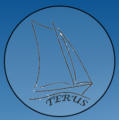
From Kalymnos to Symi: (June-October 2022)
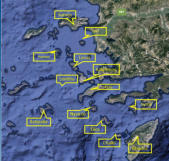


The island of Kos located south of Kalymnos is well visited by European tourists as it has a lot of nice beaches. The airport is well connected to the major European cities. We stopped there for
nice beaches. The airport is well connected to the major European cities. We stopped there for two days but did not like the place at all, as the only attraction seems to be frying under the sun
two days but did not like the place at all, as the only attraction seems to be frying under the sun or taking a cruise on one of the noisy pirate boats. However, the city does have some historical
or taking a cruise on one of the noisy pirate boats. However, the city does have some historical sites, but not much is done to make them attractive to visitors. The harbor is protected by a big
sites, but not much is done to make them attractive to visitors. The harbor is protected by a big fortress and not far from the harbor, is the tree where Aristotle, philosopher, taught his
fortress and not far from the harbor, is the tree where Aristotle, philosopher, taught his science. For me, Kos is a place I will skip with no regrets as it does not offer much and other
science. For me, Kos is a place I will skip with no regrets as it does not offer much and other islands around there are much more attractive. Sailors should be aware that on the east and west
islands around there are much more attractive. Sailors should be aware that on the east and west sides of the islands strong winds often blow, so I advise you not to sail close to the island unless
sides of the islands strong winds often blow, so I advise you not to sail close to the island unless you need to stop at Kos.
you need to stop at Kos.
 South of Kos is the island of Nysiros. This is a volcanic island that emerged from the sea during a
South of Kos is the island of Nysiros. This is a volcanic island that emerged from the sea during a volcanic eruption in around 160,000 BC. Afterwards, 5 other explosions occurred and the
volcanic eruption in around 160,000 BC. Afterwards, 5 other explosions occurred and the interesting fact is that each time the lava that came out of the volcano was different. There are
interesting fact is that each time the lava that came out of the volcano was different. There are pumice stones in some areas and in other places dark basalt. I recommend visiting the volcano
pumice stones in some areas and in other places dark basalt. I recommend visiting the volcano early in the morning when the temperature is bearable. The place is dominated by the big crater
early in the morning when the temperature is bearable. The place is dominated by the big crater of Stephanos in which it is possible to walk. The landscape looks lunar with occasionally some little
of Stephanos in which it is possible to walk. The landscape looks lunar with occasionally some little vents indicating that deep below the hot lava is still bubbling. The smell of sulfur is noticeable but
vents indicating that deep below the hot lava is still bubbling. The smell of sulfur is noticeable but it was tolerable while we were there. Before you leave the place make sure you visit the two other
it was tolerable while we were there. Before you leave the place make sure you visit the two other craters that are
craters that are 
 located to the right of the entrance office. Those 2 craters are much smaller than Stephanos as
located to the right of the entrance office. Those 2 craters are much smaller than Stephanos as they are only 30 to 50 meters wide. They are young as they date from the eruptions of 1871 and
they are only 30 to 50 meters wide. They are young as they date from the eruptions of 1871 and 1877. While you walk on the trail towards the craters you will encounter some hot
1877. While you walk on the trail towards the craters you will encounter some hot ventssurrounded by yellow sulfur crystals. Do not get too close to the vents because they are
ventssurrounded by yellow sulfur crystals. Do not get too close to the vents because they are very hot and can burn your skin.
very hot and can burn your skin. 
 After visiting the volcano, head to the village of Nikia. At the entrance of the village, there is an
After visiting the volcano, head to the village of Nikia. At the entrance of the village, there is an interesting museum with lots of information about the volcanos. As the village is located on the
interesting museum with lots of information about the volcanos. As the village is located on the highest part of the island you have an exceptional view of the Stephanos crater. The museum
highest part of the island you have an exceptional view of the Stephanos crater. The museum explains much about the volcano and that the Nysiros volcano is part of the volcanic formation
explains much about the volcano and that the Nysiros volcano is part of the volcanic formation that included Santorini, Milos and Methana, all located in the Aegean sea.After the visit we
that included Santorini, Milos and Methana, all located in the Aegean sea.After the visit we returned to Terus that was moored in the little harbor of Palli. This port is really typical with its
returned to Terus that was moored in the little harbor of Palli. This port is really typical with its white houses. During the evening it is quiet and the only activity is the tavernas serving hungry
white houses. During the evening it is quiet and the only activity is the tavernas serving hungry boat crews.
boat crews.
 On the south-west side of the island is the main harbor of Mandraki. Big ferries arrive there and
On the south-west side of the island is the main harbor of Mandraki. Big ferries arrive there and offload a lot of people from Kos to visit Nysiros for the day. Most of the people stroll into the
offload a lot of people from Kos to visit Nysiros for the day. Most of the people stroll into the village of Mandraki and return in the evening to Kos. For them there are a lot of bars and
village of Mandraki and return in the evening to Kos. For them there are a lot of bars and  restaurants, souvenir shops, ice-cream shops and bike or car rental shops. In the evening, they
return to Kos, so it is no longer crowded. Higher up the hill above Mandraki harbor you can see
restaurants, souvenir shops, ice-cream shops and bike or car rental shops. In the evening, they
return to Kos, so it is no longer crowded. Higher up the hill above Mandraki harbor you can see the remains of an old fortress (Paleocastro) that dates to around 800 AD. Not much is known
the remains of an old fortress (Paleocastro) that dates to around 800 AD. Not much is known about who built it, but some basalt blocks weigh at least 3.5 tons. Close to the entrance on the
about who built it, but some basalt blocks weigh at least 3.5 tons. Close to the entrance on the outer wall, you can see some carvings on the wall asking merchants to leave a space of 1.5 meters
outer wall, you can see some carvings on the wall asking merchants to leave a space of 1.5 meters between the wall and the shops for soldiers to patrol.
between the wall and the shops for soldiers to patrol. 
 After Nysiros, Terus continued her trip South towards the island of Tillos. This is a small island,
After Nysiros, Terus continued her trip South towards the island of Tillos. This is a small island, and the harbor can only accommodate 12 boats. At first glance, the island seems to indicate that
and the harbor can only accommodate 12 boats. At first glance, the island seems to indicate that it has not much to offer but you discover slowly the opposite. Traces of human settlements on
it has not much to offer but you discover slowly the opposite. Traces of human settlements on the island have been dated to around 8,000 BC. It is considered one of the oldest in Greece.
the island have been dated to around 8,000 BC. It is considered one of the oldest in Greece. There is also the Charkadio cave where fossil bones of dwarf elephants have been discovered.
There is also the Charkadio cave where fossil bones of dwarf elephants have been discovered. The rest of the island consists of numerous beaches and at one end there is a well preserved
The rest of the island consists of numerous beaches and at one end there is a well preserved little monastery that today is no longer occupied by monks. While returning to the port we saw a
little monastery that today is no longer occupied by monks. While returning to the port we saw a road sign for the village of Micro Chorio. In fact it is an old city that was destroyed by an
road sign for the village of Micro Chorio. In fact it is an old city that was destroyed by an earthquake in 1940. Only ruins are left and some goats are now the only inhabitants. In the ruins
earthquake in 1940. Only ruins are left and some goats are now the only inhabitants. In the ruins you will have no problem recognizing the olive oil mills. Today a bar is open at night close to the
you will have no problem recognizing the olive oil mills. Today a bar is open at night close to the entrance to the city because it is located far from the city so the noise will not disturb the
entrance to the city because it is located far from the city so the noise will not disturb the people on the island. The mayor of the island has a strict policy and does not want the place to
people on the island. The mayor of the island has a strict policy and does not want the place to become a loud high decibel place. All the beaches of Tillos are very quiet and many people fall in
become a loud high decibel place. All the beaches of Tillos are very quiet and many people fall in love with the place because of the quietness. I can only applaud this policy.
love with the place because of the quietness. I can only applaud this policy. 
 We left Tillos and moved Eastward to the northern part of the island of Symi located 20 miles
We left Tillos and moved Eastward to the northern part of the island of Symi located 20 miles from the Turkish border. Most of the time we were in Turkish territorial waters, but this was not
from the Turkish border. Most of the time we were in Turkish territorial waters, but this was not an issue. As soon as you arrive in the main harbor of Symi you notice that the place is quite
an issue. As soon as you arrive in the main harbor of Symi you notice that the place is quite different from the other Greek harbors. The houses have several floors brightly colored
different from the other Greek harbors. The houses have several floors brightly colored facades and the roofs are not flat. In the evening, the place is invaded by many Turkish super
facades and the roofs are not flat. In the evening, the place is invaded by many Turkish super yachts who follow the instructions of the harbor master regarding where they can dock. The
yachts who follow the instructions of the harbor master regarding where they can dock. The atmosphere reminds me of St Tropez in the summer. We did not want to be dwarfed by having
atmosphere reminds me of St Tropez in the summer. We did not want to be dwarfed by having two superyachts alongside Terus,
two superyachts alongside Terus,
 so we went further down to the bay of Pedi where it was much quieter. From Pedi you can easily
so we went further down to the bay of Pedi where it was much quieter. From Pedi you can easily take a shuttle bus to the main harbor where you can buy food to resupply the boat. In Pedi there
take a shuttle bus to the main harbor where you can buy food to resupply the boat. In Pedi there is a little marina. Strong winds were announced for the coming days, and we preferred to be well
is a little marina. Strong winds were announced for the coming days, and we preferred to be well anchored in the marina. However, it is possible to anchor in the bay, but the quality of the bottom
anchored in the marina. However, it is possible to anchor in the bay, but the quality of the bottom is not very good, so in case of strong winds, going to the marina is the safest option.South of
is not very good, so in case of strong winds, going to the marina is the safest option.South of Symi there is a bay with a narrow entrance. The bay of Panormitis offers very good protection
Symi there is a bay with a narrow entrance. The bay of Panormitis offers very good protection irrespective of the wind direction. The entrance to the bay is protected by a machine gun that is
irrespective of the wind direction. The entrance to the bay is protected by a machine gun that is maintained in working order by applying a lot of grease. The major point of interest in this place is
maintained in working order by applying a lot of grease. The major point of interest in this place is the Holy monastery of the Archangel Michael. During the day, several ferries arrive from the
the Holy monastery of the Archangel Michael. During the day, several ferries arrive from the main port or Rhodes for visitors to visit the monastery which was built in the 18 century and is
main port or Rhodes for visitors to visit the monastery which was built in the 18 century and is essentially the only construction in the bay. Inside the church there are a lot of offerings
essentially the only construction in the bay. Inside the church there are a lot of offerings hanging from the ceiling as a way to ask God for protection or to thank God for healing someone.
hanging from the ceiling as a way to ask God for protection or to thank God for healing someone. Next to the church building there is a bakery, but otherwise, you have to go by bus to the main
Next to the church building there is a bakery, but otherwise, you have to go by bus to the main harbor for provisioning. At around 3 pm, the ferries return to their base and Panormitis is quiet
harbor for provisioning. At around 3 pm, the ferries return to their base and Panormitis is quiet again until 10 am the next day.
again until 10 am the next day.
 .
.
 nice beaches. The airport is well connected to the major European cities. We stopped there for
nice beaches. The airport is well connected to the major European cities. We stopped there for two days but did not like the place at all, as the only attraction seems to be frying under the sun
two days but did not like the place at all, as the only attraction seems to be frying under the sun or taking a cruise on one of the noisy pirate boats. However, the city does have some historical
or taking a cruise on one of the noisy pirate boats. However, the city does have some historical sites, but not much is done to make them attractive to visitors. The harbor is protected by a big
sites, but not much is done to make them attractive to visitors. The harbor is protected by a big fortress and not far from the harbor, is the tree where Aristotle, philosopher, taught his
fortress and not far from the harbor, is the tree where Aristotle, philosopher, taught his science. For me, Kos is a place I will skip with no regrets as it does not offer much and other
science. For me, Kos is a place I will skip with no regrets as it does not offer much and other islands around there are much more attractive. Sailors should be aware that on the east and west
islands around there are much more attractive. Sailors should be aware that on the east and west sides of the islands strong winds often blow, so I advise you not to sail close to the island unless
sides of the islands strong winds often blow, so I advise you not to sail close to the island unless you need to stop at Kos.
you need to stop at Kos.
 South of Kos is the island of Nysiros. This is a volcanic island that emerged from the sea during a
South of Kos is the island of Nysiros. This is a volcanic island that emerged from the sea during a volcanic eruption in around 160,000 BC. Afterwards, 5 other explosions occurred and the
volcanic eruption in around 160,000 BC. Afterwards, 5 other explosions occurred and the interesting fact is that each time the lava that came out of the volcano was different. There are
interesting fact is that each time the lava that came out of the volcano was different. There are pumice stones in some areas and in other places dark basalt. I recommend visiting the volcano
pumice stones in some areas and in other places dark basalt. I recommend visiting the volcano early in the morning when the temperature is bearable. The place is dominated by the big crater
early in the morning when the temperature is bearable. The place is dominated by the big crater of Stephanos in which it is possible to walk. The landscape looks lunar with occasionally some little
of Stephanos in which it is possible to walk. The landscape looks lunar with occasionally some little vents indicating that deep below the hot lava is still bubbling. The smell of sulfur is noticeable but
vents indicating that deep below the hot lava is still bubbling. The smell of sulfur is noticeable but it was tolerable while we were there. Before you leave the place make sure you visit the two other
it was tolerable while we were there. Before you leave the place make sure you visit the two other craters that are
craters that are 
 located to the right of the entrance office. Those 2 craters are much smaller than Stephanos as
located to the right of the entrance office. Those 2 craters are much smaller than Stephanos as they are only 30 to 50 meters wide. They are young as they date from the eruptions of 1871 and
they are only 30 to 50 meters wide. They are young as they date from the eruptions of 1871 and 1877. While you walk on the trail towards the craters you will encounter some hot
1877. While you walk on the trail towards the craters you will encounter some hot ventssurrounded by yellow sulfur crystals. Do not get too close to the vents because they are
ventssurrounded by yellow sulfur crystals. Do not get too close to the vents because they are very hot and can burn your skin.
very hot and can burn your skin. 
 After visiting the volcano, head to the village of Nikia. At the entrance of the village, there is an
After visiting the volcano, head to the village of Nikia. At the entrance of the village, there is an interesting museum with lots of information about the volcanos. As the village is located on the
interesting museum with lots of information about the volcanos. As the village is located on the highest part of the island you have an exceptional view of the Stephanos crater. The museum
highest part of the island you have an exceptional view of the Stephanos crater. The museum explains much about the volcano and that the Nysiros volcano is part of the volcanic formation
explains much about the volcano and that the Nysiros volcano is part of the volcanic formation that included Santorini, Milos and Methana, all located in the Aegean sea.After the visit we
that included Santorini, Milos and Methana, all located in the Aegean sea.After the visit we returned to Terus that was moored in the little harbor of Palli. This port is really typical with its
returned to Terus that was moored in the little harbor of Palli. This port is really typical with its white houses. During the evening it is quiet and the only activity is the tavernas serving hungry
white houses. During the evening it is quiet and the only activity is the tavernas serving hungry boat crews.
boat crews.
 On the south-west side of the island is the main harbor of Mandraki. Big ferries arrive there and
On the south-west side of the island is the main harbor of Mandraki. Big ferries arrive there and offload a lot of people from Kos to visit Nysiros for the day. Most of the people stroll into the
offload a lot of people from Kos to visit Nysiros for the day. Most of the people stroll into the village of Mandraki and return in the evening to Kos. For them there are a lot of bars and
village of Mandraki and return in the evening to Kos. For them there are a lot of bars and  restaurants, souvenir shops, ice-cream shops and bike or car rental shops. In the evening, they
return to Kos, so it is no longer crowded. Higher up the hill above Mandraki harbor you can see
restaurants, souvenir shops, ice-cream shops and bike or car rental shops. In the evening, they
return to Kos, so it is no longer crowded. Higher up the hill above Mandraki harbor you can see the remains of an old fortress (Paleocastro) that dates to around 800 AD. Not much is known
the remains of an old fortress (Paleocastro) that dates to around 800 AD. Not much is known about who built it, but some basalt blocks weigh at least 3.5 tons. Close to the entrance on the
about who built it, but some basalt blocks weigh at least 3.5 tons. Close to the entrance on the outer wall, you can see some carvings on the wall asking merchants to leave a space of 1.5 meters
outer wall, you can see some carvings on the wall asking merchants to leave a space of 1.5 meters between the wall and the shops for soldiers to patrol.
between the wall and the shops for soldiers to patrol. 
 After Nysiros, Terus continued her trip South towards the island of Tillos. This is a small island,
After Nysiros, Terus continued her trip South towards the island of Tillos. This is a small island, and the harbor can only accommodate 12 boats. At first glance, the island seems to indicate that
and the harbor can only accommodate 12 boats. At first glance, the island seems to indicate that it has not much to offer but you discover slowly the opposite. Traces of human settlements on
it has not much to offer but you discover slowly the opposite. Traces of human settlements on the island have been dated to around 8,000 BC. It is considered one of the oldest in Greece.
the island have been dated to around 8,000 BC. It is considered one of the oldest in Greece. There is also the Charkadio cave where fossil bones of dwarf elephants have been discovered.
There is also the Charkadio cave where fossil bones of dwarf elephants have been discovered. The rest of the island consists of numerous beaches and at one end there is a well preserved
The rest of the island consists of numerous beaches and at one end there is a well preserved little monastery that today is no longer occupied by monks. While returning to the port we saw a
little monastery that today is no longer occupied by monks. While returning to the port we saw a road sign for the village of Micro Chorio. In fact it is an old city that was destroyed by an
road sign for the village of Micro Chorio. In fact it is an old city that was destroyed by an earthquake in 1940. Only ruins are left and some goats are now the only inhabitants. In the ruins
earthquake in 1940. Only ruins are left and some goats are now the only inhabitants. In the ruins you will have no problem recognizing the olive oil mills. Today a bar is open at night close to the
you will have no problem recognizing the olive oil mills. Today a bar is open at night close to the entrance to the city because it is located far from the city so the noise will not disturb the
entrance to the city because it is located far from the city so the noise will not disturb the people on the island. The mayor of the island has a strict policy and does not want the place to
people on the island. The mayor of the island has a strict policy and does not want the place to become a loud high decibel place. All the beaches of Tillos are very quiet and many people fall in
become a loud high decibel place. All the beaches of Tillos are very quiet and many people fall in love with the place because of the quietness. I can only applaud this policy.
love with the place because of the quietness. I can only applaud this policy. 
 We left Tillos and moved Eastward to the northern part of the island of Symi located 20 miles
We left Tillos and moved Eastward to the northern part of the island of Symi located 20 miles from the Turkish border. Most of the time we were in Turkish territorial waters, but this was not
from the Turkish border. Most of the time we were in Turkish territorial waters, but this was not an issue. As soon as you arrive in the main harbor of Symi you notice that the place is quite
an issue. As soon as you arrive in the main harbor of Symi you notice that the place is quite different from the other Greek harbors. The houses have several floors brightly colored
different from the other Greek harbors. The houses have several floors brightly colored facades and the roofs are not flat. In the evening, the place is invaded by many Turkish super
facades and the roofs are not flat. In the evening, the place is invaded by many Turkish super yachts who follow the instructions of the harbor master regarding where they can dock. The
yachts who follow the instructions of the harbor master regarding where they can dock. The atmosphere reminds me of St Tropez in the summer. We did not want to be dwarfed by having
atmosphere reminds me of St Tropez in the summer. We did not want to be dwarfed by having two superyachts alongside Terus,
two superyachts alongside Terus,
 so we went further down to the bay of Pedi where it was much quieter. From Pedi you can easily
so we went further down to the bay of Pedi where it was much quieter. From Pedi you can easily take a shuttle bus to the main harbor where you can buy food to resupply the boat. In Pedi there
take a shuttle bus to the main harbor where you can buy food to resupply the boat. In Pedi there is a little marina. Strong winds were announced for the coming days, and we preferred to be well
is a little marina. Strong winds were announced for the coming days, and we preferred to be well anchored in the marina. However, it is possible to anchor in the bay, but the quality of the bottom
anchored in the marina. However, it is possible to anchor in the bay, but the quality of the bottom is not very good, so in case of strong winds, going to the marina is the safest option.South of
is not very good, so in case of strong winds, going to the marina is the safest option.South of Symi there is a bay with a narrow entrance. The bay of Panormitis offers very good protection
Symi there is a bay with a narrow entrance. The bay of Panormitis offers very good protection irrespective of the wind direction. The entrance to the bay is protected by a machine gun that is
irrespective of the wind direction. The entrance to the bay is protected by a machine gun that is maintained in working order by applying a lot of grease. The major point of interest in this place is
maintained in working order by applying a lot of grease. The major point of interest in this place is the Holy monastery of the Archangel Michael. During the day, several ferries arrive from the
the Holy monastery of the Archangel Michael. During the day, several ferries arrive from the main port or Rhodes for visitors to visit the monastery which was built in the 18 century and is
main port or Rhodes for visitors to visit the monastery which was built in the 18 century and is essentially the only construction in the bay. Inside the church there are a lot of offerings
essentially the only construction in the bay. Inside the church there are a lot of offerings hanging from the ceiling as a way to ask God for protection or to thank God for healing someone.
hanging from the ceiling as a way to ask God for protection or to thank God for healing someone. Next to the church building there is a bakery, but otherwise, you have to go by bus to the main
Next to the church building there is a bakery, but otherwise, you have to go by bus to the main harbor for provisioning. At around 3 pm, the ferries return to their base and Panormitis is quiet
harbor for provisioning. At around 3 pm, the ferries return to their base and Panormitis is quiet again until 10 am the next day.
again until 10 am the next day.
 .
.






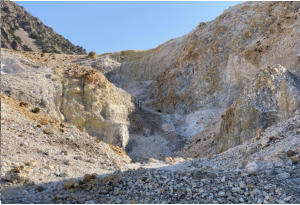

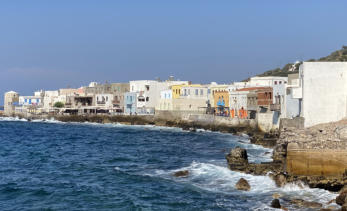

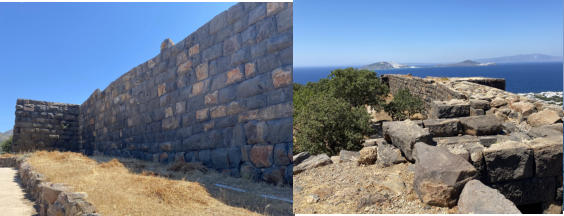










Our Journey: 2022









